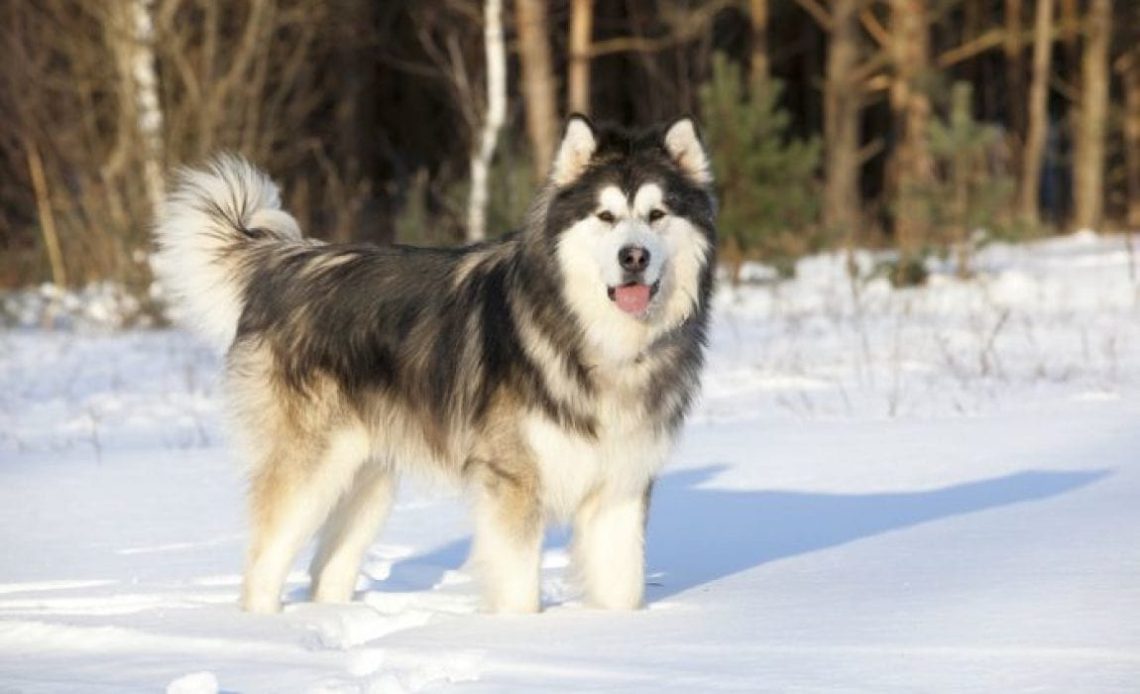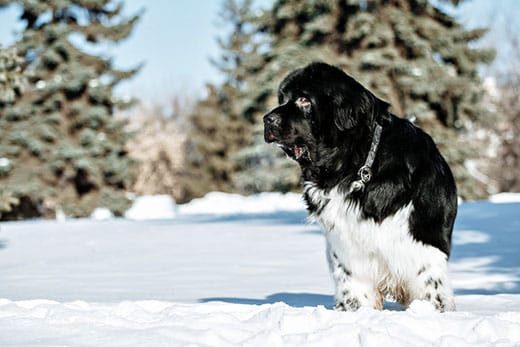
10 best dog breeds that are not afraid of the cold
If you live in a cold climate and are considering getting a dog, make sure your new pet can handle sub-zero temperatures. Top 10 Cold Tolerant Dog Breeds in this article.
Contents
1. Bernese mountain dog
The Bernese Mountain Dog is a large breed with strong legs and is known for its ability to lift heavy loads, making it a great walking companion. Although these dogs do not have a particular need for exercise, they have great stamina, so they are quite capable of keeping the owner company during a long walk on a cold day.
2 German Shepherd
This double-coated guard dog is one of the best cold-tolerant dogs. She is known for her sharp mind, so it is important to train her from an early age and provide her with plenty of movement and companionship. Their absence can lead to aggressive behavior and an obsessive desire to protect their owner.
3. Pyrenean mountain dog
These double coated dogs have long guard hairs and do well in rural and suburban areas. They are independent and hardworking, which is why they are used as herders and sled dogs. No need to let the loyal and friendly Pyrenees sit idle – and he will become an excellent companion in cold climates.
4. Keeshond
Another cold tolerant dog, small to medium sized. Well-mannered and affectionate, the Keeshond makes a great companion for long walks. With layers of warm fur like these puppies, owners don’t have to worry about keeping them warm in cold weather. But it must be remembered that with a sharp increase in temperature in the summer, the Keeshond can easily overheat.
5. Newfoundland
Newfoundlands are bred specifically for frosty weather – these are dogs that are not afraid of the cold. Gina DiNardo, vice president of the American Kennel Club, told Outside: “The Newfoundland has a thick coat that protects it from the freezing water it was originally bred to work in. This makes the breed ideal for cold climates.” Newfoundland’s large paws help them to stay stable on ice and snow. It is important not to forget to trim their claws regularly – due to the heavy load on the paws due to such a large body, this issue requires increased attention.

6. Saint Bernard
These massive dogs make excellent family pets. St. Bernards are known for their loyalty to their owners, especially children. For many years, these powerful animals have been used to search for people left under the rubble after avalanches. You may not need to use the St. Bernard as a search and rescue dog, but he will definitely be comfortable in winter weather.
7. To Siba
Due to their muscularity and stamina, Shiba Inus, who are native to Japan, enjoy the snow conditions, according to the American Kennel Club. Sibs have a double layer of thick wool that protects them from the weather and keeps them warm.
8. Commons
Among dogs that endure cold, it is worth remembering the most furry breeds. The white coat of the Komondor, also called the Hungarian Shepherd Dog, is folded into original cords. This makes the Komondor similar to the sheep they were originally bred to protect. These cords keep them comfortable in extreme weather conditions.
9. Norwegian Gray Elkhound
The Norwegian Gray Elkhound, bred in Scandinavia, is well adapted to cold climates. The exercise requirement of these dogs is very high, so they enjoy running and wallowing in the snow. In winter, the Elkhound’s double coat keeps them warm, but as spring approaches, owners should prepare for a heavy seasonal shedding season.
10 Siberian Husky
Bred as sled dogs, Siberian Huskies are biologically adapted to survive and even thrive in sub-zero temperatures. These working animals have a dense undercoat and a soft, thick coat that keeps them warm in cold weather. It is important to remember that on a hot day, a Husky may dig a hole in the yard to lie down and cool off.
Dog care in cold weather
Although the breeds listed above are well adapted to life in cold climates, it is still important to keep the dog warm. It is better to let her out less often if the temperature is below zero, and the ground is covered with ice or snow. When going for a walk with your four-legged friend, it’s best to wear booties and a sweater or jacket to protect your pet’s paws and help keep him warm.
Dogs need physical activity regardless of the weather, so they definitely need to walk, run or wander around the yard daily. In hazardous weather conditions, it is best to keep your pet active indoors. And according to the American Veterinary Medical Association, “In cold weather, check your dog’s paws frequently for injuries or damage, such as cracked pads or bleeding.”





